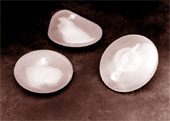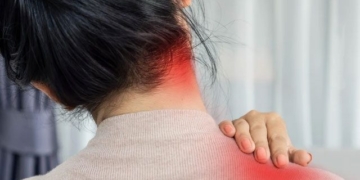In a short span of time, there have been two fatalities from breast cosmetic surgery in Hanoi and Ho Chi Minh City. Dr. Crishna B. Clough reviews existing perspectives on this issue during the 50th conference on cosmetic and reconstructive surgery in France.
1- Increased Risk of Breast Cancer
 |
| Silicone breast implants (Photo: VNN) |
This is incorrect. Women with silicone breast implants do not have a higher or lower risk of breast cancer compared to the general female population.
Regardless of whether they have silicone implants, women have a 1 in 9 lifetime risk of developing breast cancer, regardless of whether the implants contain saline or silicone.
2- Silicone Breast Implants Pose Greater Risks
This is incorrect. Currently, approximately 97% of women with breast implants have silicone implants. Research from reputable expert committees in France (Andem), the UK, and the USA indicates that these implants do not pose any risk of autoimmune diseases due to infection.
Silicone breast implants have been permitted for reuse in France since 2001. Risks only arise if the implant leaks unnoticed, causing silicone to seep out and form localized silicone lumps, which can lead to inflammation. Surgeons can remove these by replacing the implant, which is considered a routine medical emergency and does not harm health. Today, high-viscosity silicone gels are used, which are less likely to leak.
3- Impact on Mammography
This is both true and false.
If the breast implant is placed directly behind the breast tissue, it will obscure about one-third of the breast area analyzed in a mammogram. Therefore, it is essential to choose a radiologist who specializes in mammography for patients with implants, as specific techniques are available.
On the other hand, implants placed behind the pectoral muscle are less likely to interfere with mammography and analysis. For this reason, cosmetic surgeons often encourage this technique, as it yields more natural aesthetic results and tends to last longer.
4- No Risks After Successful Surgery
This is incorrect. In addition to the risk of implant rupture causing leaks, women with implants may develop a capsule, which is a fibrous tissue layer that forms around the implant due to the body’s reaction, becoming thicker and harder over time.
Nearly all cases of capsule formation occur within the first two years after implant placement. Regardless of the type of implant, the risk of this occurrence ranges from 5-10% of surgeries and cannot be predicted.
If the capsule becomes hard and causes discomfort, surgical intervention may be necessary to remove it. The exact cause is still unclear, but it has been observed that capsule formation occurs less frequently when the implant is placed behind the pectoral muscle compared to behind the breast tissue, possibly due to the contractions of the pectoral muscle.
5- No Sports Activities Allowed After Implant Placement
This is incorrect. Medically, during the healing period of 1-3 months after surgery, there are no contraindications for engaging in sports. Laboratory tests have demonstrated the durability of breast implants under pressures exceeding those experienced during strenuous physical activities. Additionally, the risk of implant displacement is negligible, as surgeons carefully consider the implant position and create an internal “bra” to maintain the implant’s location.
This does not mean that wearing a supportive bra is unnecessary, as artificial breast implants are still affected by the gravitational pull of the breast.


















































